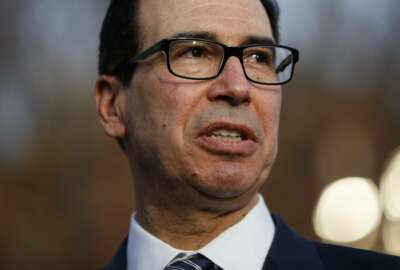One way to fix the U.S. Postal Service would be to drop the pretense that it’s not a federal agency. It is a federal agency, but one not funded by appropriations.
USPS can’t change structurally without Congressional approval. It can’t change prices without approval from a board. A politically appointed, Senate-confirmed board. It operates under a universal service obligation (USO). Yet time and again Postal officials talk about how they’re a corporation competing with FedEx and UPS. They are competing with FedEx and UPS, but as a non-appropriated federal agency.
Since 1971 the Postal Board of Governors has appointed the Postmaster General. That job has indeed become more of a CEO-like position and less a plum piece of patronage.
Whatever you call it, USPS is in serious need of reform. Successive White Houses thought so, as does the current one. Members of Congress from both parties agree, but haven’t done anything. USPS executives themselves are asking for reform. Amid the stasis, the Postal Service loses billions each and every year.
The advent of e-mail and e-commerce have both pounded USPS and given it new opportunities. But if the balance sheet is the scorecard of business, USPS is a net loser. Just a few weeks ago it reported a loss of $3.9 billion for fiscal 2018.
Into this — and at the busy Christmas mailing season — enters the report from the President Trump-appointed task force on the USPS. Curiously the report refers to the Postal Service as the Postal System on the title page. Still, it’s a diligent and earnest report.
The panel, led by Treasury Secretary Steve Mnuchin, offers two striking recommendations. One is to eliminate wage and benefit bargaining rights for the USPS’s four employee unions. The task force says labor accounts for 76 percent of Postal Service operating costs. It recommends a labor model more like that of the federal civil service system with its more predictable costs.
Second is to not relieve USPS from pre-funding its retiree health benefits. That’s the precise financial obligation Postal executives have been pointing to for years as the largest contributor to their losses. The task force does call for restructuring of the future liabilities payments. It points out, even the payments USPS has made only partially cover the obligations. And it makes them late to preserve liquidity. Moreover, USPS is close to its statutory borrowing limit — $15 billion. The runway is shrinking.
The numbers get complicated, but the essential story is not hard to understand. USPS has to grow its revenues, in part, the panel says, by uncapping commercial mail and package rates. It has to control its labor costs and bend down their future growth. It has to rationalize its infrastructure with a reasonably free hand. It needs a more rational management structure.
Equally important, the report devotes a lot of space to the USO and how to define it. Few disagree that if the USPS doesn’t deliver to every address, no one else will. But what does that mean? The task force urges USPS and Congress to more carefully define that. It may in the end mean 5-day or 4-day delivery, not 6. Or maybe 7 in the age of Amazon. Does it mean a postal deliverer touches every doorway in the nation? A growing number of urban and suburban locations are going to centrally located multi-boxes. Should every farmhouse or country hamlet require door-by-door delivery?
For all of the constraints under which it operates, I think it’s safe to say USPS does a good job. Unfortunately, as the task force points out, the current model is financially unsustainable. This latest report ought to at least get an honest reading.
Copyright
© 2024 Federal News Network. All rights reserved. This website is not intended for users located within the European Economic Area.
